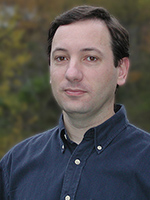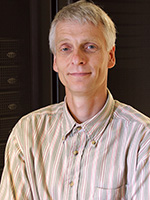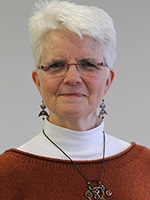This workshop will introduce participants to the ease and power of COPASI, software developed to simulate and analyze biochemical networks and their dynamics. The 3-day workshop will explore topics in:



The registration fee is $100. To register please visit our online registration. You will need to book your own lodging.
If you have any questions or comments, please email , or .
Mathematical models typically start out in simple form. One writes down a few differential equations, estimates the parameters, explores the output, and checks to see if it can predict behavior reasonably well. Since the model is really an abstraction, it captures some aspects of the system, but fails in others, so new variables and more inputs are added. The process begins to take on a life of its own and at some point, the question arises: How can one tell if this is a good model? The aim of this workshop is to provide tools to answer that question.
We will frame the question in a way that respects both the biology and the underlying mathematics. Two organizers, Pedro Mendes and Stefan Hoops, have spent the last twenty years creating a bridge between these paradigms, in the form of a software package called COPASI. COPASI is a simulation software that allows one to translate the biochemical interactions between species into dynamical systems represented by sets of either stochastic or deterministic equations. The developers have created a user friendly graphical interface, which can help researchers to apply sophisticated analytical tools to their models. This workshop is an introduction to the ease and power of this software.
Steady State Analysis: A steady state happens when all the influxes and effluxes of the pools and variables in a system are in balance, i.e. none of the variables change in number, amount, or concentration. We want to characterize each steady state and its behavior. Does the system have one, many, or no steady states, and can we compute them? Is each steady state stable or unstable? Which algorithms will help us answer that? On a larger scale, how sensitive is the system to perturbations? If we push the variables a little, will the system come back to rest? How fast? If we change the parameters how much different will the new steady state be? Can we identify important parameters that impact the system strongly?
Optimization: Design problems are common in biotechnology where one normally seeks to maximize a flux, a yield, or the concentration of an interesting product. Equally, in drug design we desire to minimize the effects of disease processes. Once a good kinetic model is available, we want to know the best cost function that reflects the requirements for the engineered organism, along with its domain of validity (for both parameters and state variables), but how does one connect a mathematical formula with the biological notion of "best"? Does the same cost function work for different models? Are some optimization algorithms more suited to one kind of behavior over another? Can we identify key steps in the model that need more information? We will use optimization algorithms as the Swiss Army Knife of model exploration, i.e. we will frame questions about controlling, manipulating, or optimizing the outcome of the system as optimization problems and pair the best optimization routines to different types of models and cost functions.
Parameter Estimation:To compare model results with the experimental data, one first has to simulate the mathematical model, which we label the forward problem. The inverse problem is the estimation of parameters from the measured observations. Of course, the two problems are intimately tied together if we want to massage the parameters so that these two outcomes are as close as possible. In order to make parameter estimation work, the forward problem requires a fast and robust time integrator. The inverse problem starts with a guess about parameter values and then modifies those values to minimize the discrepancy between model and data using an appropriate cost function. Then one iterates. In general, nonlinear kinetic models have multiple sets of parameters that lead to minimizations, some of which may only be local. The value of parameters and model variables may range over many orders of magnitude, and one can get stuck in a local minimum or one can wander around in a very flat part of the solution space.
We will explore the intricacies of parameter estimation by looking at examples that include fitting model parameters to time course data, steady state data and mixtures of the two. Applications will include data sourced from enzyme kinetics, cell biology and physiology experiments.
Bring your own: Although there are plenty of sample models posted online, we hope you will bring your favorite mathematical model with you, particularly if you work on one in your lab. Please join us for three full days of computational experiments that will give you sharper tools to enhance your models.
COPASI website: www.copasi.org
Useful COPASI reference papers: http://www.copasi.org/Support/Publications
This workshop and development of COPASI is funded through the NIH-NIGMS grant RO1 GM080219.